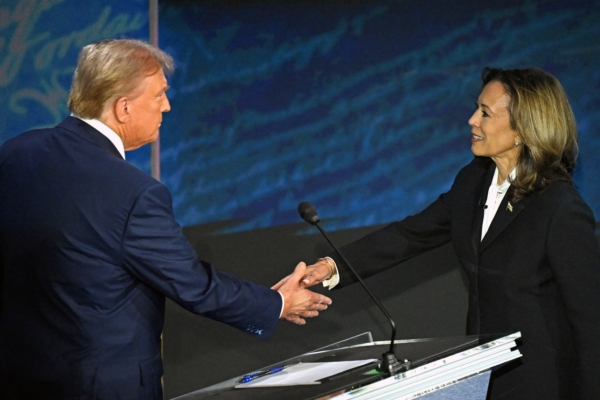If this year’s US election results show that both Trump and Harris have an equal number of electoral votes, then the election will be decided by Congress, which would be an advantage for the Republican party.
In the United States, the presidential and vice-presidential elections are not directly decided by a national popular vote, but rather through the Electoral College system. The number of electors in each state is equal to the total number of senators and representatives that state has in Congress, unrelated to the state population. The Electoral College votes on behalf of the state after the election results are announced to elect the President and Vice President of the United States.
Currently, there are 538 electoral votes across America, which is the total number of senators and representatives in Congress plus three votes for Washington D.C. Each elector can cast one vote. Therefore, a candidate needs to win in multiple states and accumulate at least 270 electoral votes to enter the White House.
If Congress finds no candidate has secured over 270 electoral votes or there’s a 269-269 tie during the certification meeting on January 6, 2025, then according to the 12th Amendment of the US Constitution, Congress must conduct a “contingent election” to immediately elect the national leaders. The President is elected by the House of Representatives, while the Vice President is elected by the Senate.
In the House of Representatives’ vote, representatives vote on a state-by-state basis with each state having one vote, based on their state’s preferences or election results to choose the President. A presidential candidate needs the support of at least 26 state delegations to win.
In the Senate’s vote, senators individually choose the Vice President, with one vote each. The Vice Presidential candidate needs at least 51 votes to win.
Analysis indicates that these rules may give the Republican party an advantage in this contingent election. Currently, the Republican party holds the majority in the federal House of Representatives seats in 26 states, while the Democratic party holds the majority in 22 states, with two states (Minnesota and North Carolina) being tied.
According to FiveThirtyEight’s predictions, the Republican party is likely to win a majority in at least 28 states in the upcoming House of Representatives election, while the Democratic party will control seats in 18 states, with four states potentially resulting in a tie.
However, electors of the Electoral College have some freedom, as there have been cases in the past where electors did not vote according to the results of the voters.
For example, in 2016, five Democratic electors and two Republican electors did not vote for their respective party candidates but instead voted for other candidates. Although rare, this kind of behavior could impact the election results and is known as “faithless electors”, referring to electors who do not vote for the candidate they were supposed to support.
According to FiveThirtyEight’s presidential election forecast, the chances of neither Trump nor Harris obtaining over 270 electoral votes are only 1 in 300, with the only more likely scenario being a tie of 269-269 votes.
In the prediction, Trump and Harris tying in electoral votes is highly unusual, but there are four scenarios where a tie could potentially occur. The premise in these scenarios is that Harris would win 225 electoral votes in non-swing states, while Trump would receive 219.
Below are the changes in seven swing states – Arizona (11 votes), Michigan (15 votes), Pennsylvania (19 votes), North Carolina (16 votes), Nevada (6 votes), Wisconsin (10 votes), and Georgia (16 votes); as well as Nebraska’s second district (1 vote) among the four tie scenarios.
FiveThirtyEight indicates that Scenario 1 is the most likely to result in a tie, however, the probability is only one in a thousand. In this scenario, Trump holds onto North Carolina and flips Pennsylvania and Michigan, while Harris successfully retains electoral votes in Wisconsin, Arizona, Georgia, and Nevada.
Trump wins Pennsylvania, North Carolina, and Michigan, totaling 50 votes. Combined with the 219 votes from other states, totaling 269 votes.
Harris wins Georgia, Arizona, Wisconsin, Nevada, and Nebraska’s second district, totaling 44 votes. Combined with the 225 votes from other states, totaling 269 votes.
The next possible tie scenario is Scenario 2, with a probability of only one in 1200. In this scenario, Trump wins Pennsylvania, Georgia, and Michigan; while Harris wins North Carolina, Arizona, Wisconsin, Nevada, and Nebraska’s second district.
The vote count remains the same, with Trump and Harris exchanging the electoral votes of North Carolina and Georgia in this scenario.
Scenario 3 has a probability of one in 1600. In this scenario, Trump regains the Sunshine State and Nebraska’s second district, while Harris retains the three Northern battleground states.
Trump wins North Carolina, Georgia, Arizona, Nevada, and Nebraska’s second district.
Harris wins Pennsylvania, Michigan, and Wisconsin.
Scenario 4 is the least likely scenario of all, with a probability of only one in two thousand. Trump takes all Northern battleground states and Nevada, while Harris wins three Southern swing states.
Trump wins Pennsylvania, Michigan, Wisconsin, and Nevada.
Harris wins North Carolina, Georgia, Arizona, and Nebraska’s second district.
Apart from the above scenarios, FiveThirtyEight has predicted other possibilities, but the chances of these occurring are one in ten thousand or even lower.

